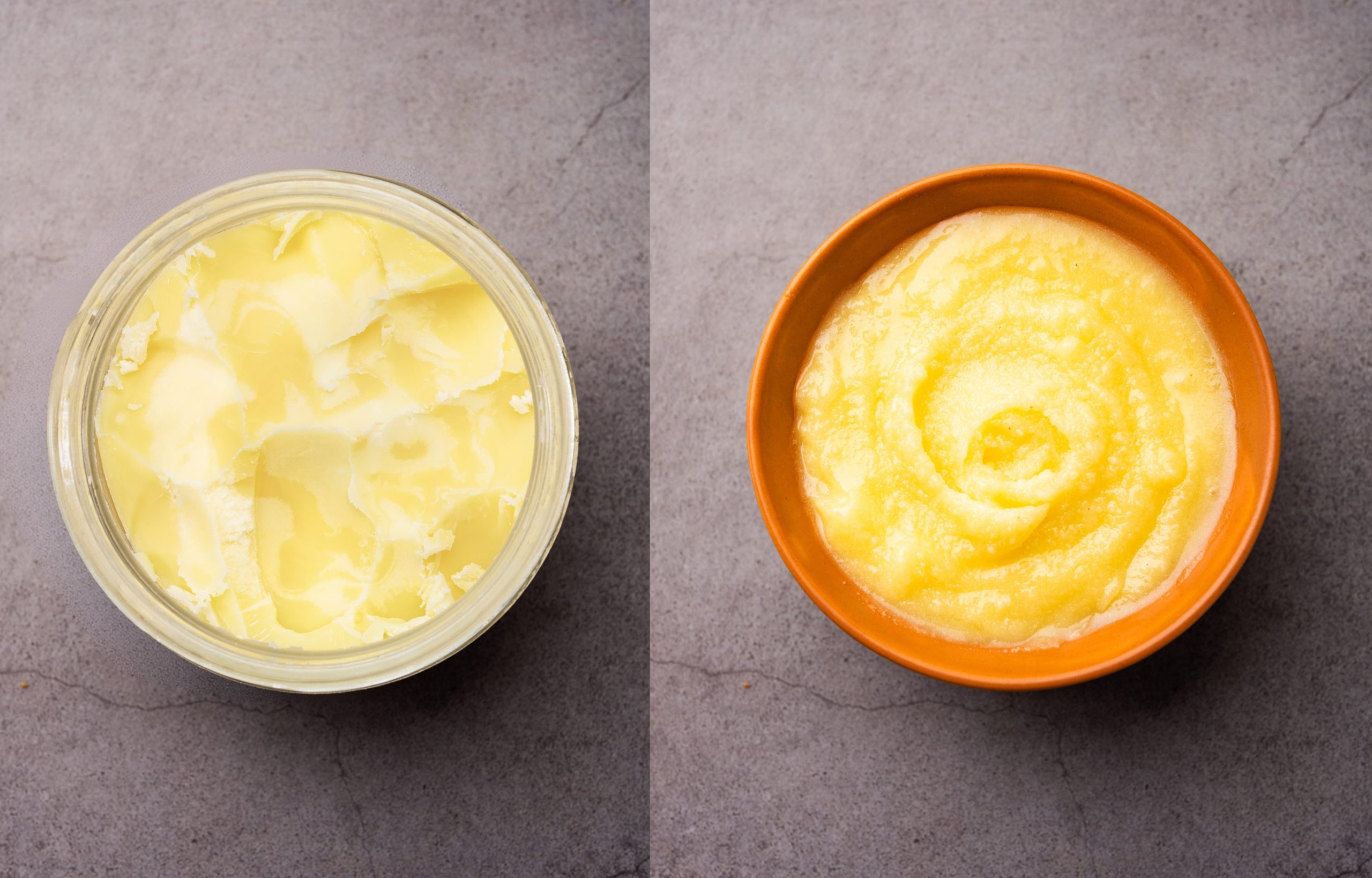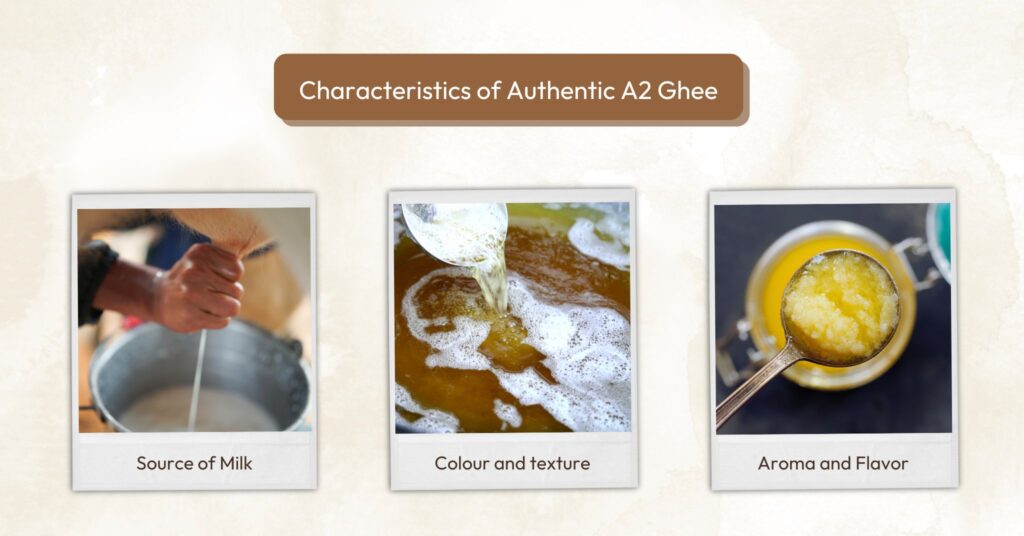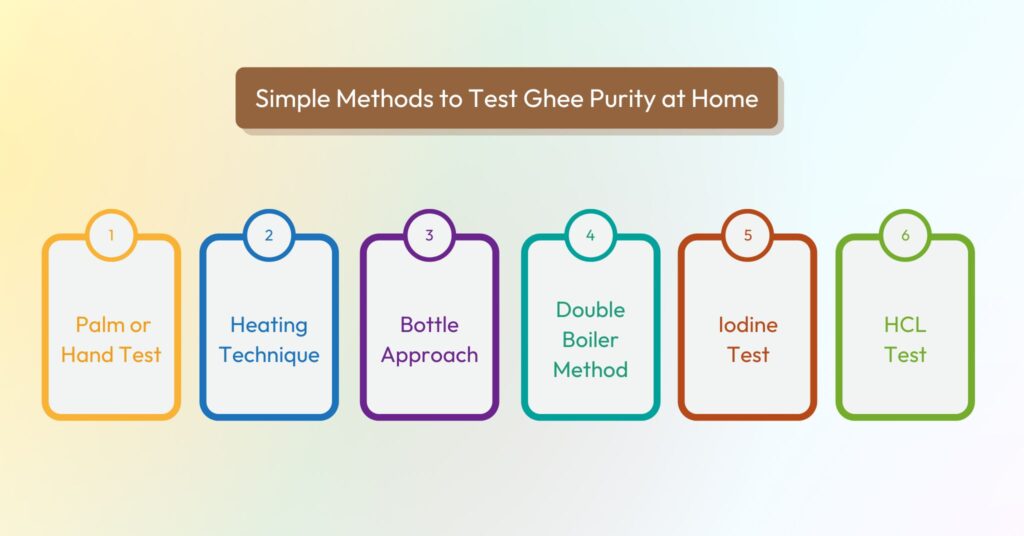How to Identify A2 Ghee: A Complete Guide

Introduction
When you walk into the store or scroll down Amazon and Flipkart for A2 Ghee.
It is easy to feel confused because so many brands list their products. But how do you know which one is real? Which one is authentic?
In this blog, we will break down everything you need to know about how to identify a2 ghee and check if it is real or not.
Understanding A2 Ghee
A2 ghee is special because of made from the milk of cows that produce a2 beta-casein protein, like Gir, Sahiwal and Red Sindhi cows.
This protein is easier to digest and it is more beneficial and healthier for our body.
For example, if you have ever felt bloated after consuming regular ghee, replacing it with A2 Gir Cow Ghee might help because of its natural and pure composition.
It is also known for enhancing immunity, improving digestion, and being good for heart health.
But how can you ensure you’re getting the real deal? Let’s dive in.
Characteristics of Authentic A2 Ghee

1. Source of Milk:
The first thing to check is where the ghee comes from. A2 ghee is made from the milk of specific cow breeds like Gir.
Many brands mention the cow breed like “A2 Gir Cow Ghee” on the labels.
Example: If a brand claims that it’s A2 Ghee but doesn’t mention the source, it might not be genuine.
2. Colour and texture:
Pure A2 ghee has a golden yellow colour because of the beta-carotene in cow’s milk.
It should also feel grainy when touched at room temperature.
Example: If the ghee looks white or feels too smooth, it might be mixed with oils or other ingredients.
3. Aroma and Flavor:
Authentic A2 ghee has a nutty and pleasant aroma that fills your kitchen when you open the jar.
It tastes slightly sweet and buttery, and regular ghee tastes bland or synthetic.
Example: When you cook with A2 Ghee, your food should smell and taste better.
Simple Methods to Test Ghee Purity at Home
When it comes to verifying the purity of A2 cow ghee, a few quick tests can help you ensure you’re getting an authentic product.
Knowing how to identify A2 ghee is important for making sure you’re purchasing high-quality ghee.
These methods are simple and can be done using items commonly found at home.

1. Palm or Hand Test
Take a spoonful of ghee and rub it between your palms. Pure ghee will melt quickly and evenly, leaving your hands fragrant and smooth.
If it doesn’t melt easily, it might be impure.
2. Heating Technique
Heat a tablespoon of ghee in a pan over medium flame. Pure ghee melts quickly and turns light brown, releasing a nutty aroma.
Impure ghee may take longer to melt and stay yellow.
3. Bottle Approach
Mix a tablespoon of ghee with salt in a clear bottle and shake it well.
Let it rest for five minutes. If you notice a red dot at the bottom, it indicates contamination with vegetable oil.
4. Double Boiler Method
Refrigerate a tablespoon of melted ghee for 5 – 10 minutes.
Pure ghee will solidify uniformly, while ghee with coconut oil will form separate layers.
5. Iodine Test
Add a few drops of iodine to melted ghee. If the solution turns purple, the ghee contains starch like mashed potatoes.
No colour change confirms purity.
6. HCL Test
Mix ghee with hydrochloric acid and sugar. Wait five minutes.
If a pink layer forms at the bottom, the ghee has Vanaspati oil. No pink layer? Your ghee is pure.
These easy tests ensure your ghee is fresh and untainted.
Tips for Purchasing Authentic A2 Ghee
1. Research Brands:
Not all brands are transparent about their products.
Look for brands that openly share all the information regarding their cow breed, production method, and quality standards.
For example, you must check customer reviews or testimonials.
If many people give good reviews, it means the product is good.
2. Check for Certifications:
You have to check certifications like FSSAI, USDA Organic, or AGMARK.
These certifications indicate that the ghee has passed all quality checks and meets standards.
For example, a brand without certifications may not be reliable, even if it claims to sell A2 Ghee.
3. Avoid Unusually Low Prices:
The A2 ghee-making process includes milk from specific cow breeds and the traditional method, whose cost is higher than regular.
So, if anyone sells at a low price, that means it’s not real and authentic. It is not good for your health.
For example, genuine A2 ghee is like a long-term investment because, in the long term, you’re healthy.
Regular consumption of chemical process ghee may lead to heart issues.
Conclusion
A2 ghee has many health benefits, like increasing immunity, strong bones, good heart health, and so on.
But it is only possible when you buy it authentic.
By checking its source, appearance, and aroma using simple home tasting, you can ensure that A2 ghee is authentic and pure or not.
And high-quality product prices are always higher than regular.
With this kind of information, you can check the originality of A2 ghee. Stay away from fake ones.
Also Read: Is Groundnut Oil Good for Cholesterol and Heart Health?